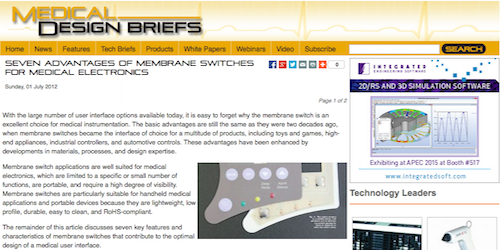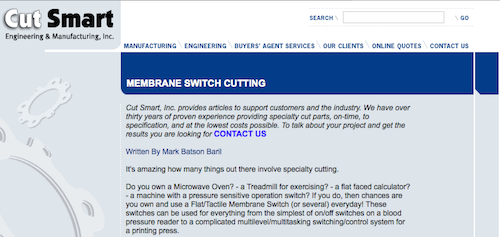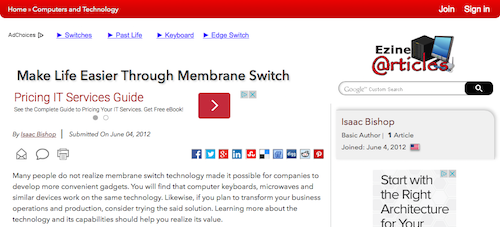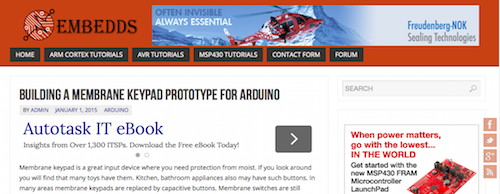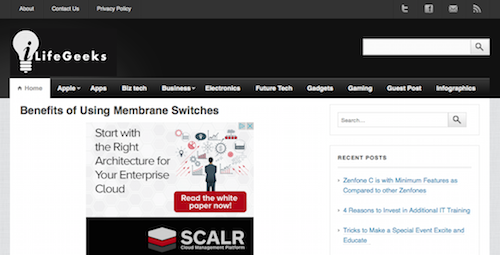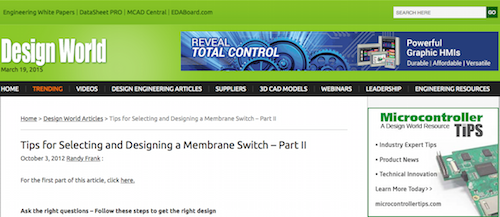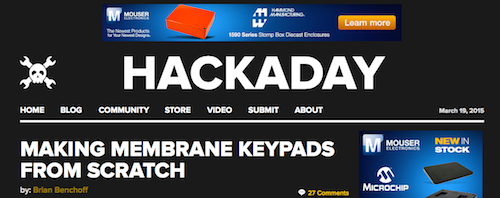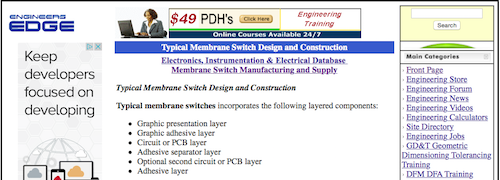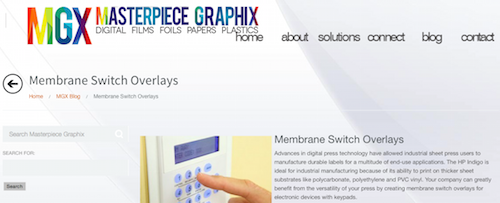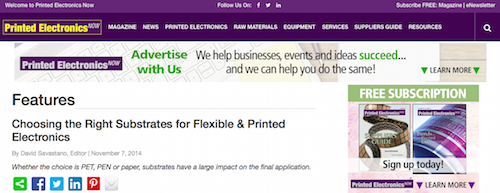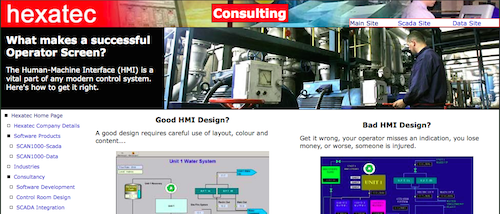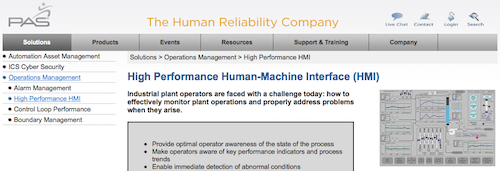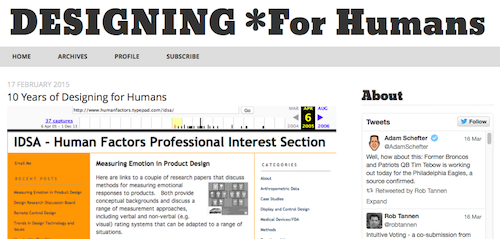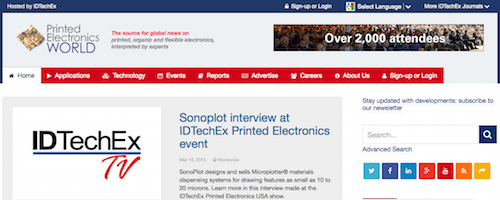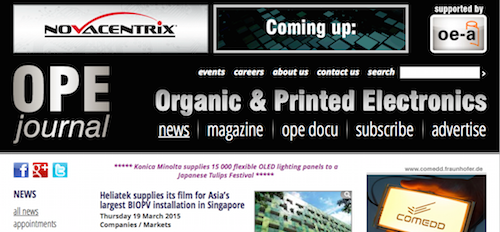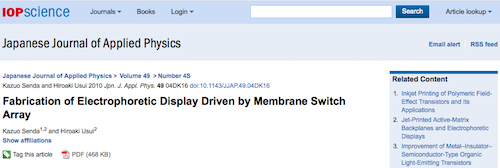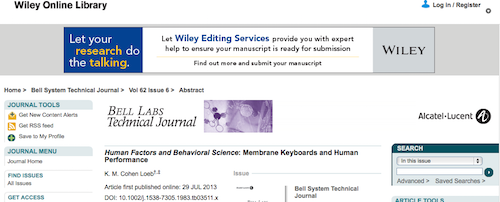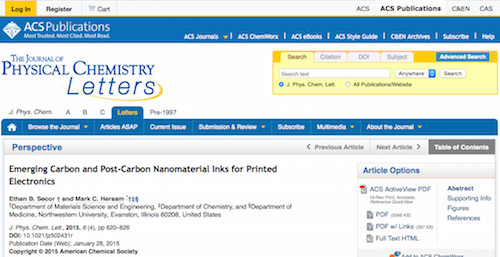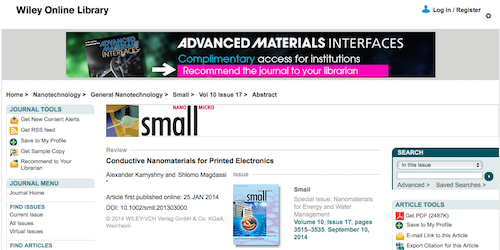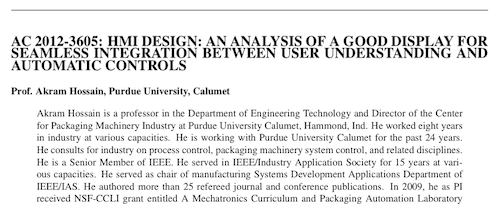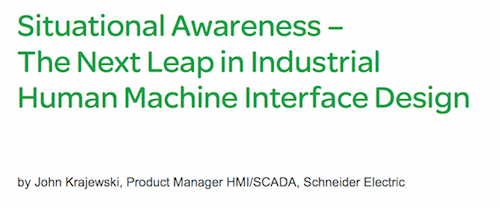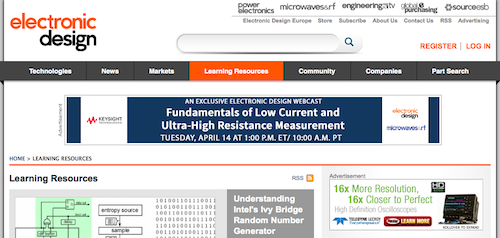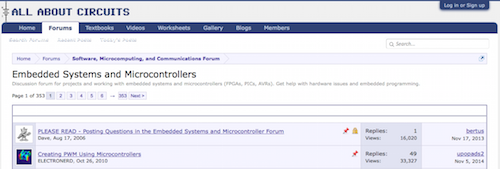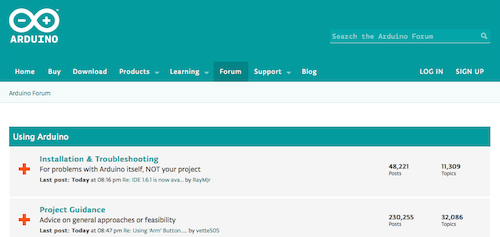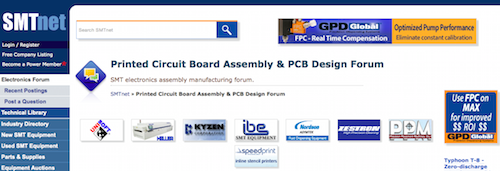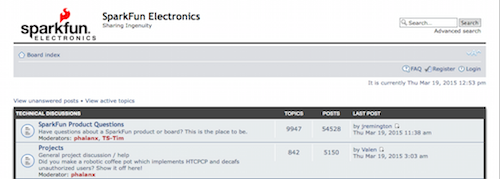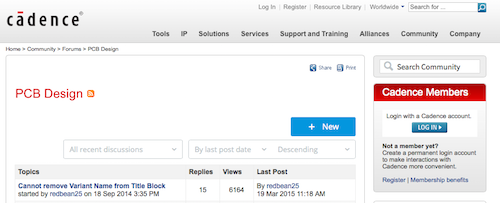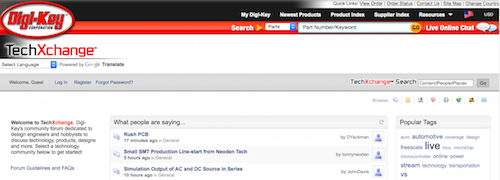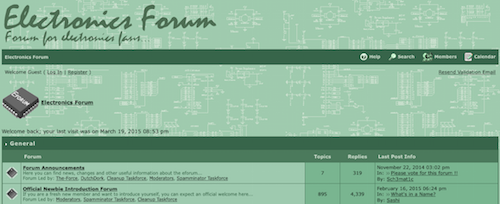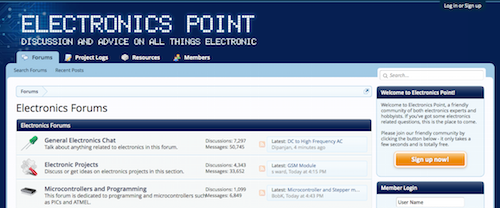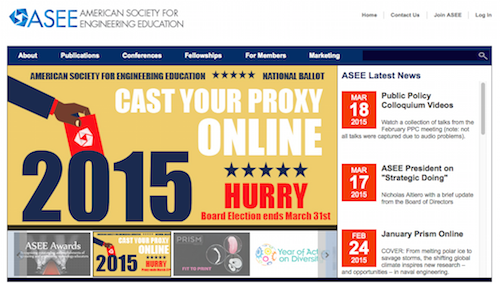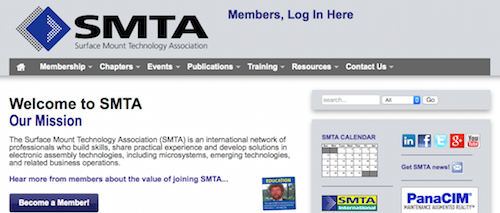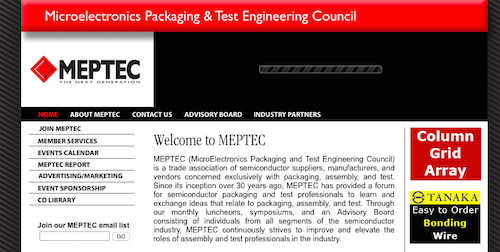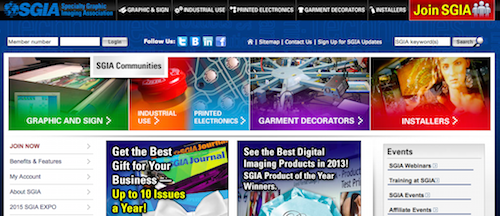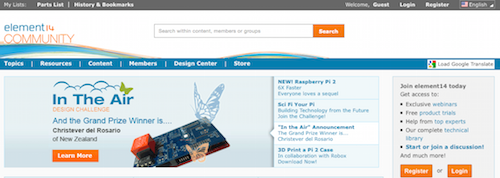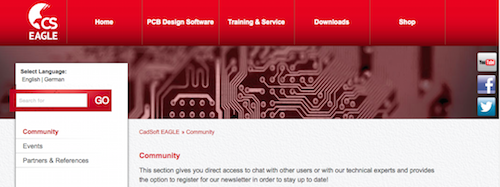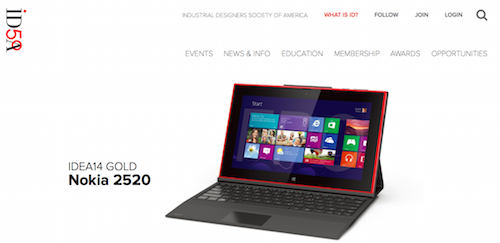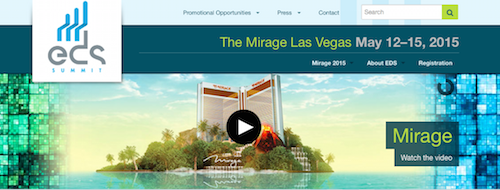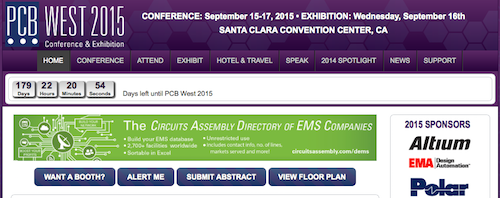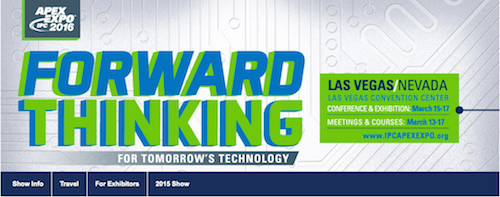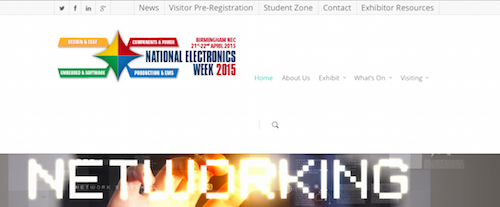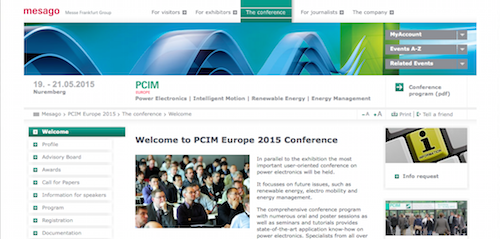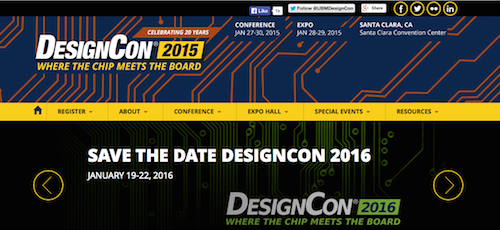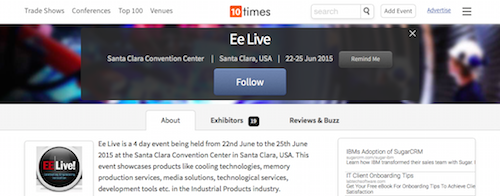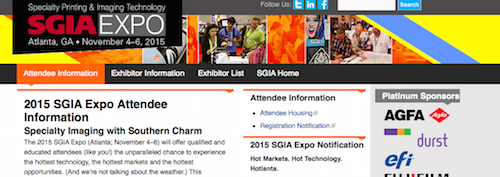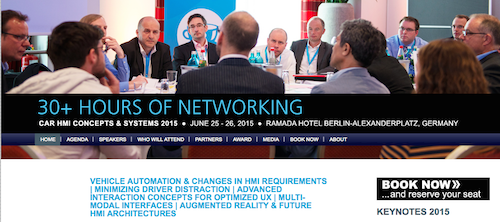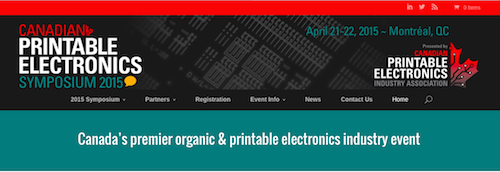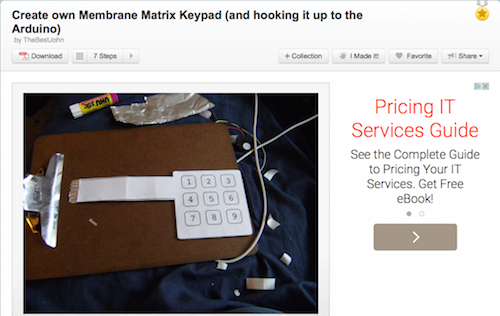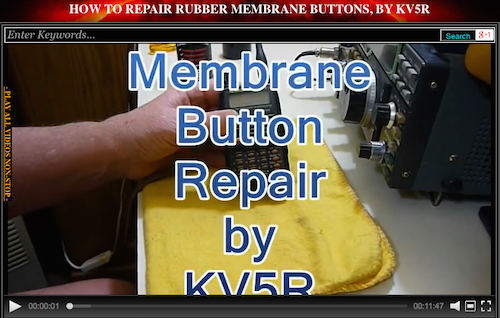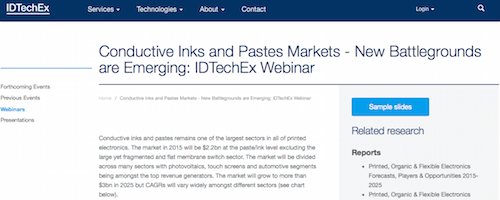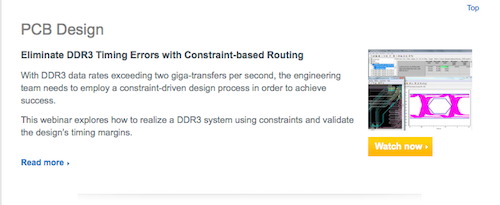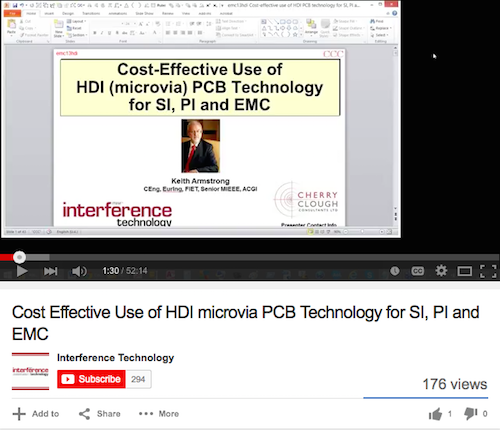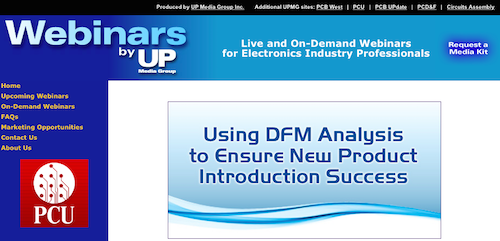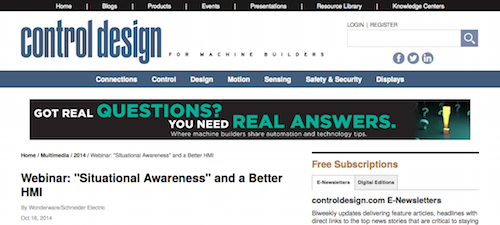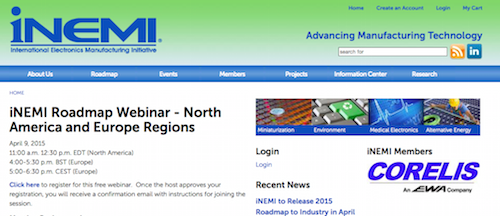As advancements in membrane switch technology and related technologies occur, it is important for students, scholars, engineers and designers to have access to the latest information. At the same time, hobbyists and young students are learning about membrane switches at a basic level and want to expand their knowledge and skill sets. So, we at Pannam have compiled a list of what we consider to be the best membrane switch technology resources available, and we cover a range of resource types and information levels to offer something for anyone interested in learning more about membrane switch technology.
Below, you will find articles and blogs, online magazines, journals and books, scholarly and technical papers, forums, societies, associations, and communities, symposiums, conferences, and expos, and tutorials, videos, and webinars all relating to membrane switch technology in some way. Our rescues include those dealing with printed circuit boards (PCBs), user interface (UI), industrial design (ID), human-machine interaction (HMI), conductive inks, and more, so that you have access to information relating to nearly every facet of membrane switch technology. We have included a table of contents to make it easier for you to jump to the resources categories that most interest you, but please keep in mind that we have listed our top membrane switch technology resources in no particular order.
Jump to:
- Articles and Blogs
- Online Magazines, Journals, and Books
- Papers
- Forums
- Societies, Associations, and Communities
- Symposiums, Conferences, and Expos
- Tutorials, Videos, and Webinars
Articles on Membrane Switches
1. Seven Advantages of Membrane Switches for Medical Electronics
@MedicalBriefs
Membrane switch technology remains a critical component of medical electronics, as this article from Medical Design Briefs illustrates. While there are several reasons that membrane switches are ideal for medical user interfaces, such as their low profiles and durability, seven key advantages stand out in this membrane switch technology resource.
Three key points we like from Seven Advantages of Membrane Switches For Medical Electronics:
- The graphic overlay, as the top layer of the membrane switch, has a nearly unlimited color scheme, making it aesthetically pleasing yet highly functional
- The antimicrobial film for use in common membrane switch applications is well suited for medical applications
- Membrane switches may be sealed, thereby protecting them from the environments commonly found in the medical field
Cost: FREE
2. Membrane Switch Cutting
Written by Mark Batson Baril, founder of Cut Smart Engineering & Manufacturing, Inc., this membrane switch technology article succinctly summarizes the rise of the membrane switch and its components. An informative piece, Membrane Switch Cutting is a great resource for readers searching for general information about membrane switches and their components, or the process involved in assembling them.
Three key ideas we like from Membrane Switch Cutting:
- Membrane switches generally are made up of six or seven different layers that are die cut and then assembled
- Membrane switch manufacturers seek faster and cheaper ways of producing switches
- Printed layers are common components of membrane switches
Cost: FREE
3. Make Life Easier Through Membrane Switch
@EzineArticles
According to this membrane switch technology resource, the many advantages of membrane switches have resulted in more convenient, customizable products. Both consumers and manufacturers reap the benefits of membrane switch technology.
Three key points we like from Make Life Easier Through Membrane Switch:
- Membrane switches may be leak proof and waterproof, making membrane switch technology perfect for businesses operating in harsh environments
- Membrane switches are ideal for assistive technology applications
- Membrane switch manufacturers often customize devices and other equipment with membrane switch technology
Cost: FREE
4. Building a Membrane Keypad Prototype for Arduino
@embedds
Embedds, in and of itself, is a great resource for learning about embedded projects from around the web. In this particular article from Embedds, tips for experimenting with membrane switches and building your own take center stage.
Three key points we like from Building a Membrane Keypad Prototype for Arduino:
- Cooper foil tape is a good choice for conductive layers of a keypad
- Adobe Illustrator helps in designing membrane keypads
- Arduino serves as a testing module for DIY membrane keypads
Cost: FREE
5. Benefits of Using Membrane Switches
@iLifeGeeks
Written by Nicole Enwright, a tech and gadget writer, Benefits of Using Membrane Switches reminds readers that membrane switches are a technological innovation that has resulted in more convenient devices. She outlines a lengthy list of membrane switch technology benefits, which shows them to be a much better choice than mechanical switches.
Three key points we like from Benefits of Using Membrane Switches:
- Membrane switches are easy to keep clean because they are smoother and have a sealed surface
- Membrane switches easily customize to fit customers’ needs
- Membrane switches lend themselves to colorful graphics and overlays, which makes it possible to install them in homes and offices with all types of decor
Cost: FREE
6. Tips for Selecting and Designing a Membrane Switch – Part II
@DesignWorld
Design News is an informative resource providing expert coverage on design engineering news, products, and tech for design engineers and engineering professionals. In this Design News article, the second of a two-part series, showcases the questions to ask when determining the right design for a membrane switch.
Three key points we like from Tips for Selecting and Designing a Membrane Switch – Part II:
- Consult with professionals and experts who will advise you on your design and then use your imagination and ask yourself the right questions to create a drawing and schematic for your membrane switch
- Consider the space you have available in your product to determine the correct dimensions of the membrane switch; keep in mind that you can design the circuit in a matrix layout with fewer leads and a greater number of connections
- Consider the environment in which you will place the membrane so you can design the membrane switch for maximum reliability
Cost: FREE
7. Making Membrane Keypads from Scratch
@hackaday
Hackaday provides collaborative project hosting, for hackers by hackers. In this article for Hackaday, Brian Benchoff explains how to build your own custom membrane keypad, as inspired by a broken children’s toy that plays sounds and sings.
Three key points we like from Making Membrane Keypads from Scratch:
- While membrane switches typically are made with silkscreen conductive inks on “fancy” plastic, DIY membrane switches don’t have to be
- DIY membrane switches really need four layer: a front decal, a top foil layer for the rows, a bottom foil layer for the columns, and a cutout layer to provide separation between rows and columns
- Adobe Illustrator and the Arduino keypad library are easy-to-use tools for DIY membrane switches
Cost: FREE
8. Typical Membrane Switch Design and Construction
@EngineersEdge
This membrane switch technology resource offers a clear introduction to membrane switch design, complete with a digram for visual representation. A very straightforward informational piece, Typical Membrane Switch Design and Construction includes all of the basic information needed to understand the components and of typical membrane switches.
Three key topics we like from Typical Membrane Switch Design and Construction:
- Layered components in membrane switches
- Membrane switch layer descriptions
- Membrane switch metal domes
Cost: FREE
9. Membrane Switch Overlays
@MGXdigital
As this article from Masterpiece Graphix explains, “advances in digital press technology have allowed industrial sheet press users to manufacture durable labels for a multitude of end-use applications.” This includes creating membrane switch overlays for electronic devices with keypads.
Three key points we like from Membrane Switch Overlays:
- Graphic overlay design is important because it displays objects’ brand identities, instructions, machine feedback, and tactile feel that factor into operators’ abilities to enter in their desired settings
- Operators interact with overlays and membrane switches often, so eye-catching and easily understood membrane switch graphic overlays are key
- Polyester typically is more durable than polyethylene and polycarbonate in membrane switch applications
Cost: FREE
10. Choosing the Right Substrates for Flexible & Printed Electronics
@PE_Now
Written by David Savastano, editor of Printed Electronics Now, Choosing the Right Substrates for Flexible & Printed Electronics points out the impact substrates have on the final application. Deciding between paper, plastic film, metal, or other types of substrates is critical when designing printed electronics systems, and each has advantages and disadvantages.
Three key points we like from Choosing the Right Substrates for Flexible & Printed Electronics:
- Substrate performance characteristics of polyethylene terephthalate (PET), polyethylene-naphthalate (PEN), polyimide (PI), paper, foil, and other substrates impact the application
- PET is more resistant to tearing and humidity when compared to paper and is a popular choice for flexible and printed electronics
- Substrate manufacturers see more opportunities and options as the flexible and printed electronics market continues to grow
Cost: FREE
11. How to Design a Good HMI Display
Membrane switches play an important role in human machine interface (HMI), and HMI design entails thoughtful use of layout, color, and content, according to this article from Hexatec. One of the best features of this membrane switch technology resource is that it includes a visual and descriptive comparison of good HMI design versus bad HMI design. This article serves as an introduction to designing screen graphics for engineers.
Three key points we like from How to Design a Good HMI Display:
- Modern control room systems use visual displays to convey information; the clarity of these displays plays a role in how well plants are run
- HMI displays should be visible even at a distance
- User-friendly designs solve an array of problems and need to be clear, easy to rad, and legible across a control desk
Cost: FREE
12. High Performance Human-Machine Interface (HMI)
@PASGlobal
This membrane switch technology resource from PAS, the human reliability company, details the challenges industrial plant operators face when using control rooms build between the 1950s and 1970s. The displays consist of large amounts of raw data with little to no context and do not provide adequate situation awareness for operators. Implementing high performance HMIs is a solution for these operator displays.
Three key points we like from High Performance Human-Machine Interface (HMI):
- High performance HMI provides intuitive visualization of data through a set of best practices
- HMI best practices include utilizing appropriate color palettes, grouping relevant information, enabling glance situation awareness through pattern recognition, and more
- The design of HMI can negatively or positively affect an operator’s ability to effectively manage the operation
Cost: FREE
13. Designing *for Humans
@robtannen
Designing *for Humans is a blog by Rob Tannen, Director of Research and User Interaction for Bresslergroup. Described as an online reference tool, Design *for Humans promotes “interest, knowledge, and responsibility for the cognitive, ergonomic, and perceptual aspects of user interface and product design and use.” Human factors play a very important role in industrial design, making Designing *for Humans a useful resource for those interested in membrane switch technology.
Three posts we like from Designing *for Humans:
- User Interfaces at the Computer History Museum
- Intuitive Voting
- 5 Surprising Principles for Designing Smartwatches
Cost: FREE
Online Magazines, Journals and Books
14. Printed Electronics World
@PEWorld
Printed Electronics World offers the “latest printed, organic, and flexible electronics news from across the globe.” With interpretations from IDTechEx Experts, PE World is an online magazine that serves as a robust membrane switch technology resource.
Three articles we like from Printed Electronics World:
- World’s First Multitouch, Button-Free 3D Shaped Panel for Automotive
- Wearable Sensors: Enabling a $70bn Wearable Technology Market by 2025
- Ultrathin Polymer Insulators Key to Low-Power Flexible Electronics
Cost: Some resources require subscription log-in for full access; Create a free account to access those resources
15. OPE Journal
Organic & Printed Electronics Journal is an online source for news, events, magazine articles, and more in OPE and related fields. Topics covered include OLED, OPV, flexible electronics, and more areas of interest relating to membrane switch technology.
Three articles we like from OPE Journal:
- OE-A predicts Further Growth for Printed Electronics
- Holst Centre and Flex-o-Fab Take First Step Towards “Lighting by the Mile”
- Erhardt + Leimer Presents Web Guider for Printed Circuits at LOPEC
Cost: FREE
16. Handbook of Industrial Engineering
@iienet
Published in cooperation with the Institute of Industrial Engineers, The Handbook of Industrial Engineering is edited by Gavriel Salvendy. The Handbook of Industrial Engineering features content on industrial engineering function and skills, technology, manufacturing, design, and more and is available online for viewing and reading.
Three topics we like from Handbook of Industrial Engineering:
- Planning and integration of product development
- Human-centered product planning and design
- Design for manufacturing
Cost:
- Online version: FREE
- Print copy: *Est. $235.28
Papers on Membrane Switch Technologies
17. Fabrication of Electrophoretic Display Driven by Membrane Switch Array
@IOPPublishing
From the Japanese Journal of Applied Physics, Fabrication of Electrophoretic Display Driven by Membrane Switch Array is written by Kazuo Senda and Hiroaki Usui. The paper focuses on the fabrication of membrane switches suitable for driving large-scale flat-panel displays.
Three topics we like from Fabrication of Electrophoretic Display Driven by Membrane Switch Array:
- Applications of electrophoretic devices (EPDs) and organic light-emitting diodes (OLEDs) in large-area, flexible displays
- Using the flexible printed circuit technology of polyamide films
- Low contact resistance of membrane switches
Cost: $20
18. Human Factors and Behavioral Science: Membrane Keyboards and Human Performance
@WileyLibINFO
Written by K. M. Cohen Loeb and published in the Bell System Technical Journal, Human Factors and Behavioral Science: Membrane Keyboards and Human Performance describes “systematic human factors research in which typing performance using a membrane keyboard and using a conventional, full-travel keyboard were compared for subjects representing different levels of typing proficiency.” The paper delivers key insights into typing performance with membrane keyboards.
Three points we like from Human Factors and Behavioral Science: Membrane Keyboards and Human Performance:
- Membrane switch technology is popular in consumer products because of low production cost and design flexibility
- Typing performance considerations are important when designing membrane keyboards
- Practice with membrane keyboards enhances typing performance, substantially decreasing the gap between typing performance on conventional keyboards and membrane keyboards
Cost:
- 48-hour read-only rental: $6
- Cloud read-only access: $15
- PDF version for reading, printing, and saving: $38
19. Emerging Carbon and Post-Carbon Nanomaterial Inks for Printed Electronics
@ACSPublications
Written by Ethan B. Secor, doctoral candidate in Materials Science and Engineering at Northwestern University, and Mark C. Hersam, the Bette and Neison Harris Chair in Teaching Excellence, Professor of Materials Science and Engineering, Chemistry, and Medicine, this paper addresses carbon and post-carbon nanomaterials and their advantages for printed electronics. With a specific focus on recent developments in carbon nanomaterial inks, this paper is an informative membrane switch technology resource.
Three topics we like from Emerging Carbon and Post-Carbon Nanomaterials for Printed Electronics:
- Carbon and post-carbon nanomaterials produce low-cost, large-area functionality on flexible substrates
- Opportunities exist with post-carbon nanomaterial inks
- Next-generation printed electronics are possible with nanomaterial inks
Cost: 48 hours of access: $35
20. Conductive Nanomaterials for Printed Electronics
@WileyLibINFO
Published in Small, Special Issue: Nanomaterials for Energy and Water Management, Conductive Nanomaterials for Printed Electronics was written by Alexander Kamyshny and Shlomo Magdassi. This scholarly paper reviews recent developments in conductive nanomaterials and their application in printed electronics and is an important read as a membrane switch technology resource.
Three key topics we like from Conductive Nanomaterials for Printed Electronics :
- Inkjet printing of ink formulations based on metal nanoparticles, carbon nanotubes, and graphene sheets
- Basic properties of conductive nanomaterials suitable for printed electronics
- Applications of conductive nanomaterials for electronic devices
Cost:
- 48-hour read-only rental: $9
- Cloud read-only access: $20
- PDF version for reading, printing, and saving: $49.95
21. HMI Design: An Analysis of a Good Display for Seamless Integration Between User Understanding and Automatic Controls
@purduecalumet
This membrane switch technology resource was authored by Professor Akram Hossain, professor in the Department of Engineering Technology and Director of the Center for Packaging Machinery Industry, and Tanima Zaman, graduate staff member in the Department of Engineering Technology, both at Purdue University, Calumet. The paper focuses on two main areas of study: designing HMI displays to meet quality criteria and guidelines for designing HMI units in the most efficient way possible.
Three key topics we like from HMI Design: An Analysis of a Good Display for Seamless Integration Between User Understanding and Automatic Controls:
- HMI touch panels
- Fundamental concepts of designing HMI screens according to industrial standards
- Operator-friendly approaches to designing touch screen controls for complex automated machines
Cost: FREE
22. Situational Awareness – The Next Leap in Industrial Human Machine Interface Design
@SchneiderUK
John Krajewski, Product Manager HMI/SCADA at Schneider Electric, wrote this membrane switch technology resource that focuses on the improvements that can be made to HMI. Krajewski argues that operations teams “can significantly improve both the business value and the safety of their industrial systems” by improving HMI design.
Three key points we like from Situational Awareness – The Next Leap in Industrial Human Interface Design:
- Trends currently driving HMI design are larger systems, greater volumes of data, increased levels of automation, staffing proficiency issues, and expanded use of remote operations
- A key to improving overall HMI design is delivering Situational Awareness
- Goal-oriented design should include the safety and economic goals of a process and be considered during the interface design
Cost: FREE
23. Electronic Design Learning Sources (White papers, Webinars, Etc.)
@ElectronicDesign
As “the source for emerging technologies for design solutions,” Electronic Design is a comprehensive online membrane switch technology resource. The learning sources provided by Electronic Design are not to be missed, as they encompass articles, white papers, webinars, and other resources that are too numerous and helpful for us to narrow down for you. Browse the resources and find those that are best suited to your learning needs.
Three key resources we like from Electronic Design Learning Resources:
- Meeting Embedded Design Challenges with Mixed Signal Oscilloscopes
- Basics of Harsh-Environment Membrane Switches Aid Medical Devices
- Hands-on a SPLat HMI430 Controller
Cost: FREE
Membrane Switch Forums
24. Embedded Systems and Microcontrollers
Embedded Systems and Microcontrollers is a forum from All About Circuits (AAC), a space for students, hobbyists, and professionals to share their knowledge and ideas. With hundreds of thousands of members, AAC’s forums are active and include hundreds of threads relating in one way or another to membrane switch technology. Specifically, Embedded Systems and Microcontrollers is a forum for projects and working with embedded systems and microcontrollers, including FPGAs, PICs, and AVRs, and provides help and resources for hardware issues and embedded programming.
Three key threads we like from Embedded Systems and Microcontrollers:
Cost: FREE
25. Arduino Forum
@arduino
Arduino, the open source electronics prototyping platform that is based on flexible and easy to use hardware and software, hosts an online forum with hundreds of thousands of posts. Forum topics cover everything from using Arduino, to product design, to software and hardware development. The Arduino forum contains so many threads and includes so many members that it is an excellent membrane switch technology resource.
Three key threads we like from Arduino Forum:
- Interfacing Arduino with an HMI
- membrane switches
- Mounting/securing breakout boards or other PCBs without holes
Cost: FREE
26. Printed Circuit Board Assembly & PCB Design Forum
@SMTnet
SMTnet.com is a resource for providers and users of electronics manufacturing products, services, and information. One resource from SMTnet.com that we particularly find useful for membrane switch technology is the Printed Circuit Board Assembly & PCB Design Forum, which has more than 14,000 threads related to PCB assembly and surface mount technology.
Three key threads we like from Printed Circuit Board Assembly & PCB Design Forum:
- pcb manufacturing
- Questions you would ask if someone said they had a 3D printer for professional multi-layer PCBs?
- Dek printing issue – poor volume microBGA
Cost: FREE
27. SparkFun Electronics Forum
@sparkfun
SparkFun Electronics provides open source technology, resources, DIY electronics, and more. Their electronics forum is active with more than 34,000 members and more than 169,000 posts, including those relating to Arduino, PCB design, projects, and others concerning membrane switch technology.
Three key threads we like from SparkFun Electronics Forum:
- Ideas on limit switches for an electric cylinder
- Detecting contact with minimal force
- Membrane Keypad on New BigTrak
Cost: FREE
28. PCB Design
@Cadence
From Cadence, PCB Design is an active forum. Cadence members reply to questions and challenges frequently, and topics range from design to specific connectivity challenges. The forum also is easily searchable, making it a useful membrane switch technology resource.
Three key threads we like from PCB Design:
- Want to change D2PAK footprint with TO263-3 on Orcad/Allegro PCB Editor
- Manual void
- PCB Editor 16.3 problems with etch connectivity/anti-etch
Cost: FREE
29. TechXchange
@digikey
From Digi-Key, TechXchange is a community forum dedicated to design engineers and hobbyists. Discussions of technology, products, designs, and more are included in the forum, which also includes general, component discussions and reviews, projects and designs, and industry news and events. The tags and search features make it simple to find specific information for your needs, including membrane switch technology.
Three key threads we like from TechXchange:
Cost: FREE
30. DipTrace Community Forums
@DipTrace
A PCB design software tool, DipTrace has an intuitive interface and wide capabilities. The DipTrace community forums include general electronics, basic schematic and PCB design, PCB manufacturing questions, hobby circuits and small projects, and more.
Three key threads we like from DipTrace Community Forums:
Cost: FREE
31. Electronics Forum
The Electronics Forum is a well-moderated forum covering all areas of electronics, including general discussions, electronics trade, challenges, and more. Threads offer information and questions on CAD, PCB, mechanical engineering and design, digital electronics and embedded design, and more topics relating to membrane switch technology.
Three key threads we like from Electronics Forum:
Cost: FREE
32. Electronics Point Electronics Forums
@electronicforum
Electronics Point electronics forums are active and welcome users of any ability level, from beginner to expert. The discussions cover everything from general electronics to project logs and are open to anyone. The forums also include links to electronics newsgroups and archives, making it easy to find information relating to membrane switch technology.
Three key threads we like from Electronics Point Electronics Forum:
Cost: FREE
Societies, Associations and Communities
33. American Society for Engineering Education
@ASEE_DC
The American Society for Engineering Education (ASEE), a nonprofit organization comprised of both individuals and institutions, is dedicated to education in engineering and engineering technology. Their site offers news, publications, links to conferences, and other resources for the industry. Take advantage of the website search feature and find any engineering-related content you need, including that relating to membrane switch technology.
Three key resources we like from American Society for Engineering Education:
Cost:
- Individual Membership
- Professional: $100/year
- Professional On-Line: $89/year
- Retired: $40/year
- Life: Contact for information
- Student: $30/year
- Student On-Line: $10/year
- K-12 Educator: $50/year
- Organizational Membership
- Schools with engineering or four-year engineering technology accreditation: $1,400/year
- One member entity with dual engineering and technology membership: $2,300/year
- Schools with two-year engineering technology accreditation only: $700/year
- College Affiliate: $350/year
- Non-US/Canadian Academic: $1,400/year
- K-12 schools: $175/year
- Corporate: $1,400/year
- Corporate Affiliate: $350/year
- Government: $1,400/year
- Association: $1,400/year
- Association Affiliate: $350/year
34. Surface Mount Technology Association (SMTA)
@SMTAorg
The Surface Mount Technology Association (SMTA) is composed of international professionals who build skills, share practical experience, and develop solutions in electronic assembly technologies. SMTA professionals focus on microsystems, emerging technologies, and related business operations. SMTA offers a wide range of resources, including those involving membrane switch technology, online; events, publications, training opportunities, and more are available.
Three key resources we like from Surface Mount Technology Association:
Cost:
- Individual Membership: $75 or less
- Corporate Membership: $450
- Global Membership: $1,495
35. MEPTEC
For over 30 years, MicroElectronics Packaging and Test Engineering Council (MEPTEC) has been a trade association of semiconductor suppliers, manufacturers, and vendors that focus solely on packaging, assembly, and test. MEPTEC’s forum for semiconductor packaging and test professionals provides a space for exchanging ideas, including those related to membrane switch technology.
Three key resources we like from MEPTEC:
Cost:
- Individual: $95/year
- Corporate MEPTEC Membership: $475
- Student MEPTEC Membership: $45
36. Specialty Graphic Imaging Association (SGIA)
@SGIA_Community
Specialty Graphic Imaging Association (SGIA) supports the leaders of digital and screen printing communities. SGIA Groups include The Professional Decal Application Alliance (PDAA), the Academy of Screen and Digital Printing Technologies (ASDPT), and Screen Printing Technical Foundation (SPTF). All of the communities, groups, and members make SGIA an expert-rich community and resource, especially for membrane switch technology.
Three key resources we like from Specialty Graphic Imaging Association (SGIA):
- SGIA Journal
- SGIA Archived Documents for the Industrial Use Community
- SGIA Archived Documents for the Printed Electronics & Membrane Switch Community
Cost:
- Printer
- Annual Revenue Less Than $249,999
- US: $300
- International: $200
- Annual Revenue $250,000 to $999,999
- US: $475
- International: $300
- Annual Revenue $1,000,000 plus
- US: $800
- International: $500
- Global Printer: $1,000
- Annual Revenue Less Than $249,999
- Supplier
- Annual Revenue Less Than $999,999
- US: $475
- International: $300
- Annual Revenue $1,000,000 plus
- US: $800
- International: $500
- Global Supplier: $1,000
- Annual Revenue Less Than $999,999
37. element14 community
@element14
An online community for engineers, element14 is one of the best ways to connect with peers. Share expert advice and get answers to all of your membrane switch technology questions though the element14 community.
Three key resources we like from element14 community:
- CadSoft EAGLE PCB Software Community
- element14 Tech Journal (Issue 2): Exploring the Internet of Things
- element14 Tech Journal Summer 2014
Cost: Sign up for a free membership to access all content
38. Mentor Graphics Communities
@MentorPCB
The Mentor Graphics Communities are intended for anyone involved in the electronics industry. The questions, tips, news, and opinions found in Mentor Graphics Communities are helpful membrane switch technology resources.
Three key resources we like from Mentor Graphics Communities:
Cost: FREE
39. CadSoft EAGLE Community
@CadSoftTech
The CadSoft EAGLE Community delivers opportunities to chat with other users or with technical experts. Visitors may access the groups as news groups or as element14 forums, and the information contained in them is reliable and accurate. Trust CadSoft EAGLE Community as a membrane switch technology resource, especially because they have established security measures to eliminate spam through the web interface.
Three resources we like from CadSoft EAGLE Community:
Cost: FREE
40. Industrial Designers Society of America (IDSA)
@IDSA
The Industrial Designers Society of America is a nonprofit and is one of the oldest and largest membership organizations for industrial design professionals. With more than 3,200 members in 28 professional chapters in the United States and internationally, IDSA works to advance the profession of industrial design through advocacy, education, community, and information. Overall, IDSA is a great membrane switch technology resource.
Three resources we like from Industrial Designers Society of America (IDSA):
Cost: FREE and paid resources available; Contact for membership and subscription information
Symposiums, Conferences and Expos
41. SGIA Industrial Printing Symposium
@SGIA_graphics
November 3-4
Atlanta, GA
Presented in conjunction with the 2015 SGIA Expo, the SGIA Industrial Printing Symposium recognizes that the developing industrial printing sector offers strong opportunities for companies serving it. Over the course of two days, the symposium will focus on technologies for industrial imaging, developments that are profoundly changing industrial print, case studies and industry profiles, production strategies, and more. Learn from peers, colleagues, and industry experts and share information relating to membrane switch technology at the SGIA Industrial Printing Symposium.
Cost to Attend: Contact for attendance cost
42. EDS 2015
May 12-15
Las Vegas, NV
EDS is a leadership summit to gather “the movers, shakers, and brightest minds that electronic component manufacturers, distributors, and representatives have to offer.” A forum designed for planning and discussing new opportunities and goals, EDS 2015 involves high-level strategic meetings, event functions, and informal gatherings. EDS 2015, a joint effort with the Electronic Components Industry Association and the Electronic Representatives Association, “is a combination of scheduled, one-on-one meetings, product exhibits, educational programs, and networking opportunities to maximize success.” Attend EDS 2015, make connections, and further your knowledge of membrane switch technology.
Cost to Attend: Contact for attendance cost
43. PCB West 2015
@PCBWest
September 15-17
Santa Clara, CA
PCB West returns to the Silicon Valley this September. PCB West joins together engineers, designers, fabricators, assemblers, and managers with the goal of improving skills, increasing knowledge, and networking with peers, colleagues, and experts. PCB West 2015 promises to be a terrific membrane switch technology resource.
Cost to Attend: Contact for attendance cost
44. IPC APEX Expo 2016
@IPCassociation
March 13-17
Las Vegas, NV
IPC is a global electronics industry supporter and is a leading source for industry standards, training, market research, and public policy advocacy. IPC is dedicated to providing resources to support its mission, and one of their most successful events is the IPC APEX Expo. A five-day event for the PCB and electronics manufacturing industry, IPC APEX Expo includes a technical conference and exhibition with professional development, standards development, and certification programs. The education and networking opportunities provided by IPC APEX Expo are membrane switch technology resources as well.
Cost to Attend: Contact for attendance cost
45. National Electronics Week 2015
@NEW_expo
April 21-22
Birmingham, UK
Join the UK electronics industry at National Electronics Week 2015, a popular and widely attended annual event. National Electronics Week includes features, live demonstrations, and free technical seminars and covers for separate industry sector events: design and test, components and power, production and EMS, and embedded and software. Learn more about membrane switch technology from the international community at National Electronics Week 2015.
Cost to Attend: Contact for attendance cost
46. PCIM Europe 2015
May 17-21
Nuremberg, Germany
The PCIM Europe 2015 Conference is a user-oriented conference on power electronics and focuses on future issues including electro mobility. Speakers, seminars, and tutorials provide “state-of-the-art application know-how” with specialists from around the globe. With international attendees, PCIM Europe 2015 serves as a resource for networking with experts and sharing more about membrane switch technology.
Cost to Attend: Contact for attendance cost
47. DesignCon 2016
@UBMDesignCon
January 19-22, 2016
Santa Clara, CA
DesignCon is the premier high-speed design and signal integrity event for chip, board, and systems engineers. Created for engineers by engineers, DesignCon delivers technical paper sessions, tutorials, industry panels, product demos, and exhibits with engineers’ latest theories, methodologies, techniques, applications, and more. The perfect event for chip, board, and system designers, software developers, silicon manufacturers, and other engineers, DesignCon 2016 will be an engaging membrane switch technology resource.
Cost to Attend: Contact for attendance cost
48. Embedded Systems Conference ’15
@ESC_Conf
May 6-7; July 20-22; November 4-5
Boston, MA; Santa Clara, CA; Minneapolis, MN
Join other embedded systems professionals, embedded systems designers, and technical professionals for an educational experience at Embedded Systems Conference ’15. With three dates in three locations, ESC is a comprehensive technical conference offering extraordinary training opportunities, including “the latest techniques and tricks for reducing time, cost, and complexity in the embedded development process.” No matter which event you choose to attend, ESC will be an informative membrane switch technology resource.
Cost to Attend: Check dates and availability for the conference location of your choice
- Conference Pass
- Super Early Bird: $799
- Early Bird: $949
- Advanced: $1,149
- Regular/Onsite: $1,299
- Demo Hall Only
- Super Early Bird: FREE
- Early Bird: FREE
- Advanced: FREE
- Regular/Onsite: $75
49. EE Live 2015
@10_times
June 22-25
Santa Clara, CA
A four-day event held at the Santa Clara Convention Center, EE Live will showcase products, services, solutions, technology services, and development tools in the industrial products industry. A popular event in the Silicon Valley, EE Live will be a useful membrane switch technology resource.
Cost to Attend: Contact for attendance cost
50. 2015 SGIA Expo
@SGIA_graphics
November 4-6
Atlanta, GA
Experience the latest technology, hottest markets, and most exciting opportunities at the 2015 SGIA Expo. “Leading imaging professionals will showcase their best products, methodologies, and innovative applications,” while attendees will explore the equipment and solutions from leading exhibitors, including digital imaging, printed electronics, and membrane switches, on the expansive show floor. Don’t miss your opportunity to attend and take advantage of the membrane switch technology showcased at SGIA Expo.
Cost to Attend: Contact for attendance cost
51. Automotive Cockpit HMI USA 2015
@IQPC
May 19-21
Detroit, MI
The second international conference on automotive cockpit HMI is slated to take place in May in Detroit, Michigan. HMI experts face the challenge of creating interfaces that are engaging, functional, easy to reach, and easy to use as drivers interact with their cars in all new ways. Join industry professionals from around the globe and share in their extensive experience while exchanging knowledge and dialogue in the interactive networking environment provided by Automotive Cockpit HMI USA 2015. Topics include advanced connectivity solutions, multi-modal HMI approaches, and other membrane switch technology-related subjects.
Cost to Attend:
- Early Bird available until April 24
- Gold Package (2-day conference plus 2 workshops): $4,264
- Silver Package (2-day conference plus 1 workshop): $4,064
- Bronze Package (2-day conference): $3,414
- Standard Price
- Gold Package (2-day conference plus 2 workshops): $4,664
- Silver Package (2-day conference plus 1 workshop): $4,264
- Bronze Package (2-day conference): $3,564
- Special Car Manufacturer Pricing
- Gold Package (2-day conference plus 2 workshops): $2,764
- Silver Package (2-day conference plus 1 workshop): $2,564
- Bronze Package (2-day conference): $2,364
52. CAR HMI Concepts & Systems 2015
June 25-26
Berlin, Germany
CAR HMI Concepts & Systems combines expert keynotes and interactive world café sessions with private discussion rounds and networking sessions for two days of engaging, inspirational exchanges. Attendees gain “a deeper understanding of the latest trends and tasks in HMI and user experience and ensure your share in the growing and promising market.” Connected and automated cars are a reality, and this event includes membrane switch technology resources to help the industry grow.
Cost to Attend: Contact for attendance cost
53. Automotive User Interfaces and Interactive Vehicular Applications
@AutoUI2015
September 1-3
Nottingham, UK
Automotive UI, the International Conference on Automotive User Interfaces and Interactive Vehicular Applications, is dedicated to UI research in the automotive industry. This premier forum joins researchers and practitioners involved in the human and technical aspects of in-vehicle user interfaces and applications and addresses “novel in-vehicle services, models of and concepts for enhancing the driver experience, driver performance and behavior, development of (semi-) autonomous driving, and the needs of different user groups.” The hardware and software required in advancing Automotive UI is at the center of the conference, which will be an informative and engaging experience relating to membrane switch technology.
Cost to Attend: Contact for attendance cost
54. HMI 2015
@ASDFInt
November 26-27
Kualalumpur, Malaysia
The third international conference on Human Machine Interaction will take place in Malaysia this November. A research conference, HMI 2015 is an event geared toward scientists, scholars, engineers, and students from universities around the world to present current research and activities, with the ultimate goal of fostering relations between the universities and the industry. Co-sponsored by the Association of Scientists, Developers, and Faculties, HMI 2015 will deliver cutting-edge research relating to membrane switch technology.
Cost to Attend: All fees are subject to required taxes
- Authors (ASDF Members): Starting at $150
- Authors (Non-Members): Starting at $200
- Listeners: Starting at $120
55. Canadian Printable Electronics Symposium 2015
@CPEIA_ACEI
April 21-22
Montreal, Quebec, Canada
The Canadian Printable Electronics (PE) Symposium is Canada’s “premier organic and printable electronics industry event,” dedicated to the emerging fields of PE. Attendees will learn, network, and collaborate for business development in the PE field and relating membrane switch technology sector.
Cost to Attend:
- CPEIA Member Admission: $495 + HST
- CPEIA Student Member Admission: $125 + HST
- Non-CPEIA Member Admission: $750 + HST
- Non-CPEIA Member Student Admission: $225 + HST
- Speaker: $250 + HST
Tutorials, Videos and Webinars to Learn About Membrane Switches
56. Printed Circuit Design Tutorial
Printed Circuit Design Tutorial, a tutorial by Gold Phoenix Technology Tech Center, aims to answer common customer questions and help customers avoid common mistakes in PCB design. The tutorial is straightforward and easy to understand and covers basic rules, tips, and techniques in PCB design, so it lends itself to being a helpful membrane switch technology resource as well.
Three key topics we like from Printed Circuit Design Tutorial:
- Basic rules in PCB design
- Basic technology in PCB manufacturing
- Usability of ENIG for membrane switches
Cost: FREE
57. Create Own Membrane Matrix Keypad (and hooking it up to the Arduino)
@TheBestJohn
@instructables
John Warren, an embedded systems app developer and web developer known online as The Best John, shares his knowledge for making a DIY keypad in this Instructable that is better suited to novices and hobbyists. Viewers get an introduction to the process of constructing a keypad and learn some useful membrane switch technology at the same time.
Three key points we like from Create Own Membrane Matrix Keypad (and hooking it up to the Arduino):
- A matrix is much like a grid (think, Battleship game)
- To make a cheap, effective keypad, you already probably have the necessary materials at home
- Drawing the keypad and mocking it up on the computer with software such as Paint, Photoshop, or Illustrator are important steps to creating your own membrane matrix keypad
Cost: FREE
58. Integrated User Interface and Industrial Design
@Bresslergroup
Bresslergroup’s strategists, researchers, designers, and engineers are innovators in industrial and interaction design for consumer, medical, and commercial products. In this membrane switch technology-related video, Bresslergroup shares information about integrated UI and industrial design at PhillyChi’s Annual Design Slam.
Three key points we like from Integrated User Interface and Industrial Design:
- Integrating UI and ID optimizes the product experience
- Industrial engineers and UI designers need to work in teams
- Design teams work best when they are a cohesive unit, rather than working in divided teams
Cost: FREE
59. How to Repair Rubber Membrane Buttons, by KV5R
Hobbyists and students will particularly appreciate this video, which offers a step-by-step guide for fixing a handheld radio. The process used in the video applies to fixing common household objects that contain membrane switches, much like remote controls.
Three key points we like from How to Repair Rubber Membrane Buttons, by KV5R:
- Using the correct tools and materials is crucial to working with and repairing membrane switches
- Replacement parts for common products containing rubber membrane switches are inexpensive
- Beginners and students can practice with membrane switches around the home to increase their knowledge and skills
Cost: FREE
60. Conductive Inks and Pastes Markets – New Battlegrounds are Emerging: IDTechEx Webinar
@IDTechEx
As one of the largest sectors in all of printed electronics, conductive inks and pastes are projected to be a $2.2 billion market in 2015. The webinar addresses the fact that “the key emerging fronts are sensors, wearables, metamaterials, and touch switches” and examines the key technologies and markets for conductive inks and pastes.
Three key topics we like from Conductive Inks and Pastes Markets – New Battlegrounds are Emerging: IDTechEx Webinar:
- Analysis of the latests trends and market dynamics
- Application focus on core as well as emerging sectors
- Segmented ten-year market projections
Cost: Contact for more information and a quote
61. PCB Design Webinars
@ZukenAmericas
Zuken provides software solutions for PCB design as well as the design of electrical wiring from schematic to cable harness and panel layout and e-PLM. Their PCB Design Webinars, therefore, are informative and expert-driven resources addressing PCB and membrane switch technology. While we have highlighted three of our top pics from Zuken’s PCB Design Webinars here, feel free to visit the site and browse through all of the webinars to choose the ones that are best suited to your needs.
Three webinars we like form PCB Design Webinars:
- Eliminate DDR3 Timing Errors with Constraint-based Routing
- I/O Optimization with 3D SoC, SiP, and PCB Co-design
- Power Integrity Essentials for the PCB Design Process
Cost: FREE – Sign in with your social network to view the webinars
62. Designing for Power: Achieving Complete AC/DC PCB Power Integrity Analysis
@EMA_EDA
EMA Design Automation, a leader in product development solutions, delivers a complete range of electrical CAD tools, data management and PLM systems, services, training, and technical support. In this sixty-minute webinar, Matthew Harms, EMA Design Automation Applications Engineer, addresses the designers’ need for “advanced power integrity tools that allow them to see the complete picture and achieve signoff-level verification through their analysis.” This discussion of potential solutions is an important membrane switch technology resource.
Three key ideas we like from Designing for Power: Achieving Complete AC/DC PCB Power Integrity Analysis:
- Current hotspots leading to reliability problems
- Identifying the impact of interrelated voltage and temperature
- Eliminating decoupling capacitor over-design to cut costs
Cost: Contact for more information and webinar cost
63. Cost Effective Use of HDI Microvia PCB Technology for SI, PI, and EMC
@EMC_EMI
This webinar from December 2014 features Keith Armstrong, Chartered Electrical Engineer (UK), former chairman of IEE’s Professional Group on Electromagnetic Compatibility, and chair of the IEE’s Working Group on EMC and Functional Safety. Advancements in high-density interconnect PCB manufacturing technology have begun reducing costs and getting to market more quickly, as the nearly hour-long webinar explains. These advancements are also good news for the membrane switch market.
Three key topics we like from Cost Effective Use of HDI microvia PCB Technology for SI, PI, and EMC:
- Microvia PCB manufacturing now reduces bare-board cost where a Through Hole Plate board would require ten or more layers
- Microvia’s benefits for good EMC, SI, and PI design may reduce overall costs
- The possibility of using microvia board techniques to achieve good EMC while getting to market more quickly
Cost: FREE
64. Using DFM Analysis to Ensure New Product Introduction Success
Presented by Mark Gallant, Senior Product Marketing Manager of DownStream Technologies, this webinar is produced by UP Media Group, Inc. With an intended audience of PCB designers, engineering and CAD managers, and project engineers and managers, Using DFM Analysis to Ensure New Product Introduction Success explores how Design for Manufacture (DFM) analysis identifies fabrication issues prior to manufacturing and eliminates potential delays. These issues play an important role in membrane switch technology, making this webinar a great resource.
Three key ideas we like from Using DFM Analysis to Ensure New Product Introduction Success:
- Numerous variables in typical PCB design impact PCB fabrication, bare board testing, and component assembly
- Benefits of identifying DFM issues prior to beginning the fabrication process
- Common myths of the PCB design process
Cost: Contact for more information and cost
65. Webinar: “Situational Awareness” and a Better HMI
@SchneiderNA
@Control_Design
Control Design is the automation and controls magazine and website for machine builders, and Schneider Electric is a global specialist in energy management. When they combine forces to create this webinar, the result is 60 minutes of learning the benefits of situational awareness for operational excellence and a membrane switch technology resource worth watching.
Three key points from Webinar: “Situational Awareness” and a Better HMI:
- Better HMI designs provide true situational awareness for enhanced operator effectiveness and fewer shutdowns
- Properly-designed HMI applications optimize business value and controlled system safety
- Applying contemporary situational awareness techniques yields benefits
Cost: Contact for a quote
66. iNEMI Roadmap Webinar – North America and Europe Regions
The International Electronics Manufacturing Initiative (iNEMI) is a non-profit research and development consortium comprised of leading electronics manufacturers, suppliers, associations, government agencies, and universities. iNEMI’s mission is to “forecast and accelerate improvements in the electronics manufacturing industry for a sustainable future,” and one of the ways they address this mission is by hosting roadmap webinars featuring prominent OEMs to forecast their business and technical needs in various product sectors. This webinar, to be held April 9 at 11AM EDT, is 90 minutes in length and features speakers Bill Bader, Fred Sporon-Fiedler, Jim Spall, Dan Gamota, Michael Gaitan, and Matthew Chalkley. Participate in the webinar and access forecasts relating to membrane switch technology needs.
Cost: FREE

